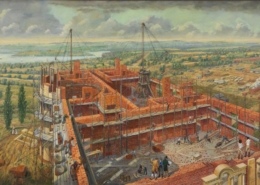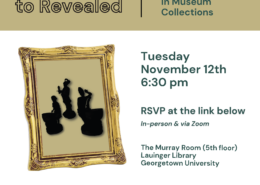Tudor Place Sago Produces Rare Flower!
The male & female flowers grow on separate plants and are pollinated by the wind, insects or human intervention. Male flowers, or inflorescence, are usually 18-20 inches long and cylindrical in form. The female inflorescence is in the form of a semi-globose head, yielding 100-200 large bright red edible nut-like seeds which ripen around the end of December.
(Looks like we have the female…)

The Sago arrived in North America in 1775 on the famous Boston Tea Party ship. There were 3 sagos on board, the largest went to Mount Vernon, one went to Governor Morris, and the last to Pratt Nursery which is where Tudor Place’s Sago is descended from.
Here at Tudor Place in 1813 Martha and Thomas Peter (and son Washington) went to Philadelphia to visit their daughter Columbia at Madam Revardie’s school. There they bought several small plants and a sago palm at Pratt’s Garden. This began the sago palm’s existence as a traditional landscape feature on TP south lawn.
Currently the Tudor Place Sago Palm is resting by the bench outside the visitor center. You can see this rare and beautiful flower by looking up and through the leaves!






